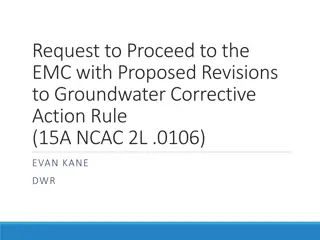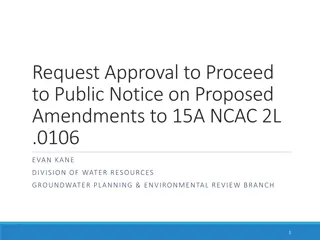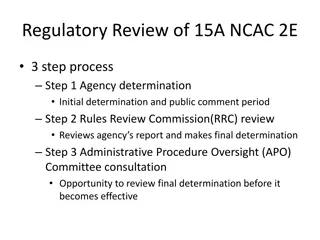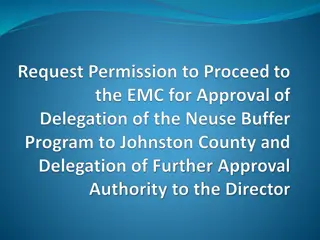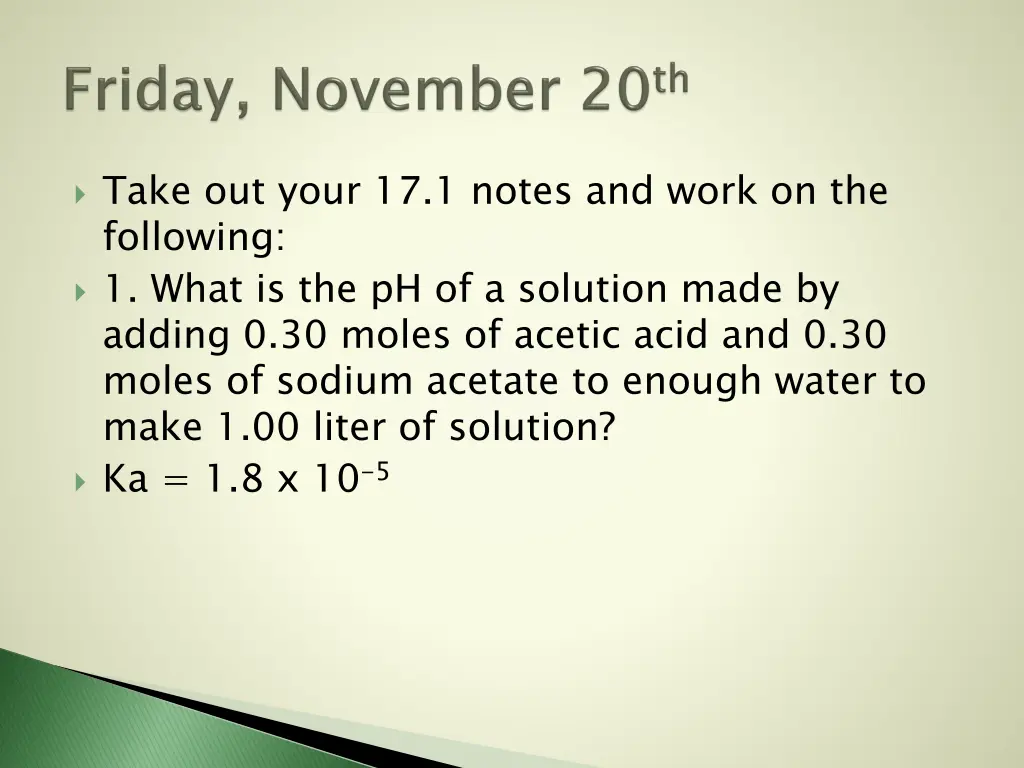
Calculating pH of Solution with Acetic Acid and Sodium Acetate
Learn how to determine the pH of a solution containing 0.30 moles of acetic acid and 0.30 moles of sodium acetate in a 1.00-liter solution using the given Ka value. Understand the concept of weak and strong electrolytes in the ionization process.
Download Presentation

Please find below an Image/Link to download the presentation.
The content on the website is provided AS IS for your information and personal use only. It may not be sold, licensed, or shared on other websites without obtaining consent from the author. If you encounter any issues during the download, it is possible that the publisher has removed the file from their server.
You are allowed to download the files provided on this website for personal or commercial use, subject to the condition that they are used lawfully. All files are the property of their respective owners.
The content on the website is provided AS IS for your information and personal use only. It may not be sold, licensed, or shared on other websites without obtaining consent from the author.
E N D
Presentation Transcript
Take out your 17.1 notes and work on the following: 1. What is the pH of a solution made by adding 0.30 moles of acetic acid and 0.30 moles of sodium acetate to enough water to make 1.00 liter of solution? Ka = 1.8 x 10-5
Whenever a weak electrolyte and a strong electrolyte with an ion in common are together, the weak electrolyte ionizes less than it would if it were alone. less
NaNO2to a solution of HNO2 (CH3NH3)Cl to a solution of CH3NH2 Sodium formate to a solution of formic acid Potassium bromide to a solution of hydrobromic acid NaCl to a solution of HC2H3O2
NaNO2to a solution of HNO2 Increase (CH3NH3)Cl to a solution of CH3NH2 Decrease Sodium formate to a solution of formic acid Increase Potassium bromide to a solution of hydrobromic acid Stay the same NaCl to a solution of HC2H3O2 Stay the same
pH = 4.73 0.060 M
Finish problems in slides (on my website calendar with answers) Take notes on 17.2

